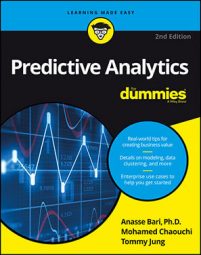Getting business expertise on board
Business analysts serve as your domain experts: They provide the business-based perspective on which problems to solve — and give valuable insight on all business-related questions. Their experience and domain knowledge give them an intuitive savvy about what approaches might or might not work, on where to start and what to look at to get something going.A model is only as relevant as the questions you use it to answer. Solid knowledge of your specific business can start you off in the right direction; use your experts' perspectives to determine:
- Which are the right questions? (Which aspects of your business do you want predictive analytics to improve?)
- Which is the right data to include in the analysis? (Should your focus be on the efficiency of your business processes? The demographics of your customers? Which body of data stands out as the most critical?)
- Who are the business stakeholders and how can they benefit from the insights gained from your predictive analytics project?
Firing up IT and math expertise
Data scientists can play an important role linking together the worlds of business and data to the technology and algorithms while following well-established methodologies that are proven to be successful. They have a big say in developing the actual models and their views will affect the outcome of your whole project.This role will require expertise in statistics such as knowledge of regression/non-regression analysis and cluster analysis. (Regression analysis is a statistical method that investigates the relationships between variables.) The role also requires the ability to correctly choose the right technical solutions for the business problem and the ability to articulate the business value of the outcome to the stakeholders.
Your data scientists should possess knowledge of advanced algorithms and techniques such as machine learning, data mining, and natural language processing.
Then you need IT experts to apply technical expertise to the implementation, monitoring, maintenance, and administration of the needed IT systems. Their job is to make sure the IT infrastructure and all IT strategic assets are stable, secure, and available to enable the business mission. An example of this is making sure the computer network and database work smoothly together.When data scientists have selected the appropriate techniques, then (together with IT experts) they can oversee the overall design of the system's architecture, and improve its performance in response to different environments and different volumes of data.
In addition to the usual suspects — business experts, math and statistical modelers, and computer scientists — you may want to spice up your team with specialists from other disciplines such as physics, psychology, philosophy, or liberal arts to generate fresh ideas and new perspectives.

